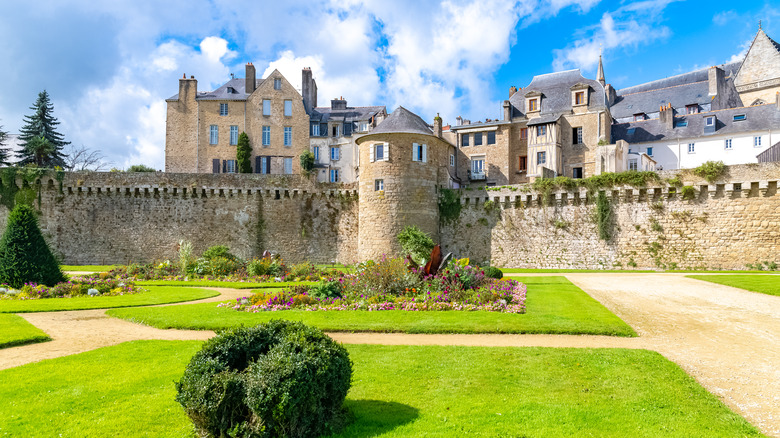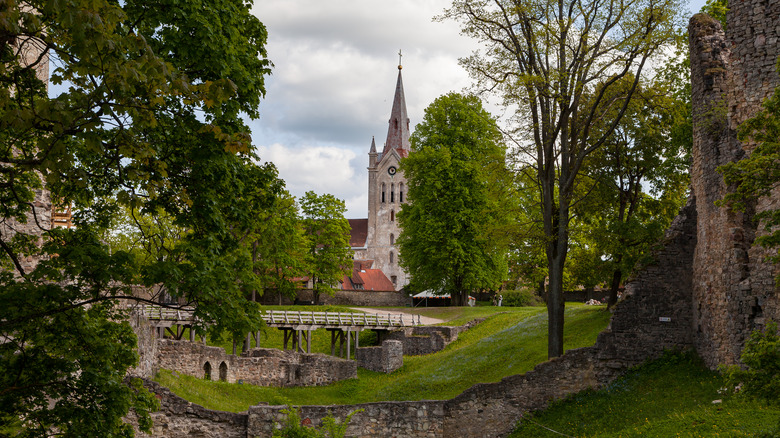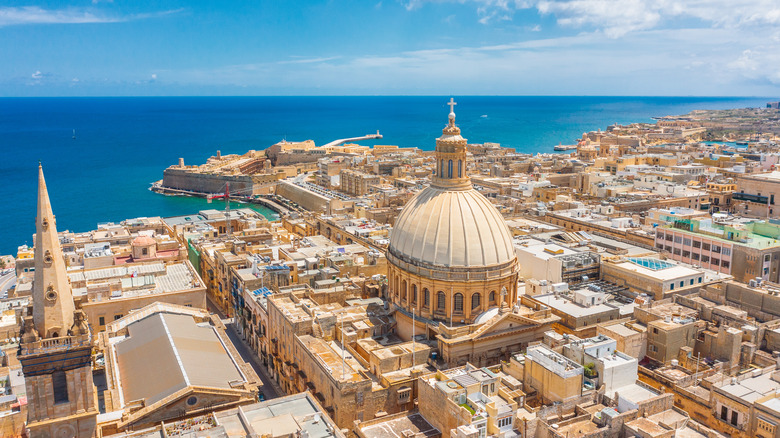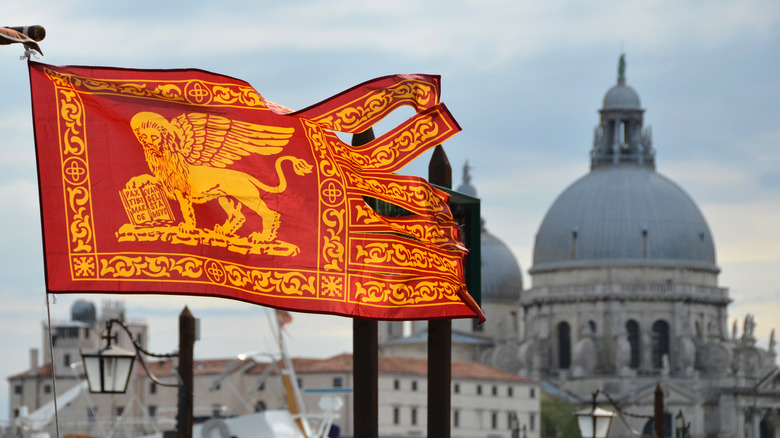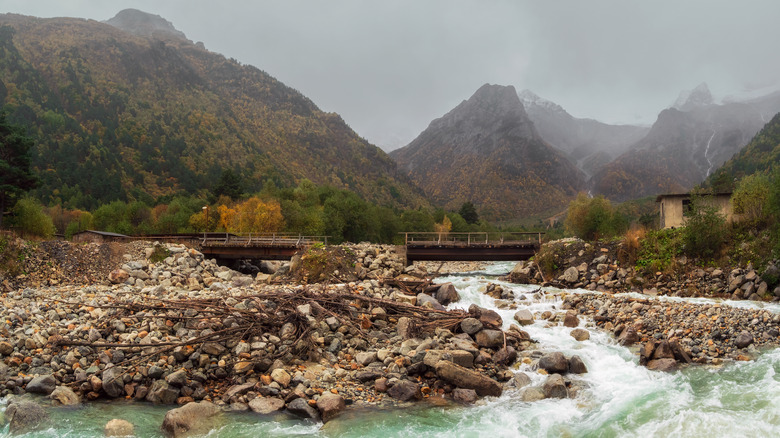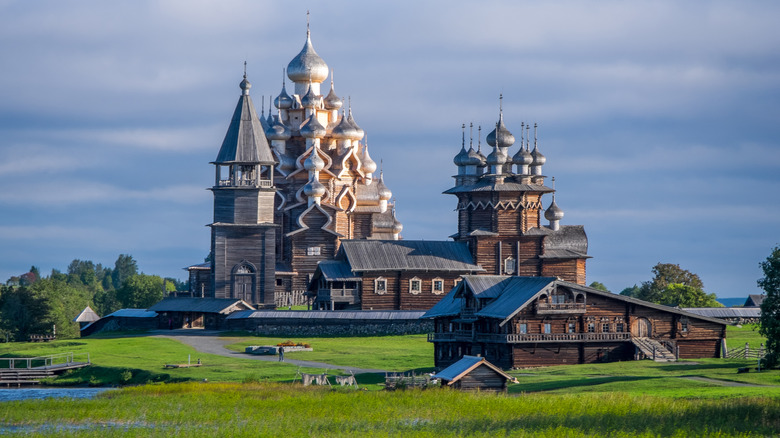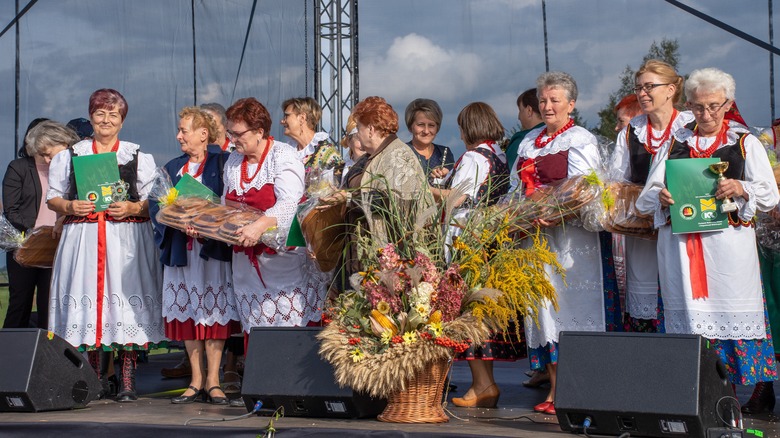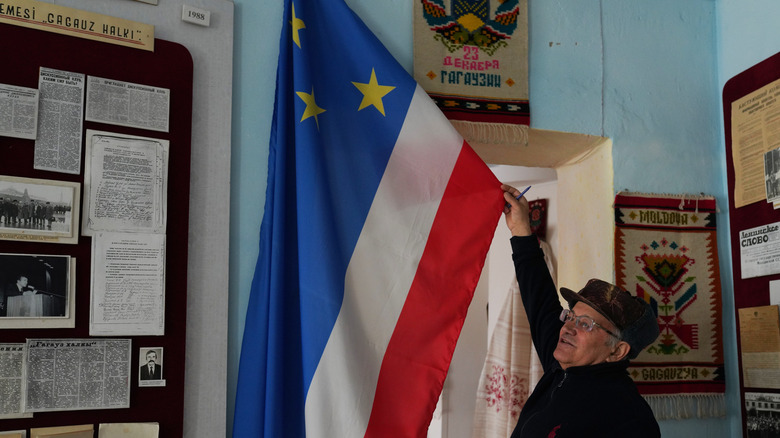12 European Languages Most People Have Never Heard
Most Americans are familiar with European languages such as French, Italian, Russian, or German. Europeans might add a few smaller tongues to their list of languages they know like Catalan, Czech, Slovak, Hungarian, and Estonian. Nevertheless, Europe is by and large considered the continent where national languages reign supreme.
Yet, if one peels back the layers, one finds hundreds of regional minority languages that even most Europeans are completely unaware of. Some of these are languages with rich literatures and folklore dating back to the Middle Ages (or even further) that were sidelined with the advent of the nation state in the 18th century. Others are purely oral languages that were only recently written down.
It is impossible to catalogue the richness of Europe's linguistic heritage. Spanning at least three different language families and numerous sub-families, here are some of Europe's linguistic hidden gems, some of which may soon never be heard ever again much like many ancient languages that have completely disappeared.
Livonian (Latvia)
Spoken along the Livonian coast of today's Latvia, the story of this Uralic relative of Finnish and Estonian is among the saddest. According to the Livonian Institute, this language persisted in small fishing communities, and those communities had even begun to develop Livonian language newspapers and literature in the 20th century. With financial assistance from Estonia and Finland, it seemed like Livonian could survive, particularly after World War I.
Unfortunately for the Livonian language (and for the whole Baltic in general), the future was completely shattered when the USSR invaded in 1940 and annexed Lithuania, Latvia, and Estonia, murdering and deporting hundreds of thousands in the process. Per the Livonian Institute, the Livonian homeland became a restricted area whose inhabitants either fled abroad or were evicted from their homes to other parts of the USSR. The tight-knit community that had kept the language alive against all odds was scattered and destroyed.
Livonian officially went extinct in 2013 when, according to the BBC, the last native speaker — 103-year-old Grizelda Kristina — died in Canada far away from her homeland. But, today, there is hope for a revival. According to Latvia's LSM News, a couple has taught their daughter the language and published a children's textbook. Currently, three-year-old Kuldi Medne holds the honor of being the only person in the world who can call the Livonian language her mother tongue. Her parents are hoping that more will follow.
Lombard (Italy/Switzerland)
The Lombards were originally a Germanic people who migrated into Italy from Northern Europe and assimilated into the prevailing Romance culture. Their legacy in part was a Romance language that became a literary light of Northern Italy.
The language differs from Italian in numerous respects. First of all, it falls into a different part of the Romance language family. According to the Oxford Guide for Romance Languages, it is a Gallo-Italian language, whereas modern Italian is an Italo-Dalmatian language. Lombard's most salient features are the dropping of final vowels and the lack of a clear plural in the masculine gender. In many cases, the plural is unmarked, while in Italian the ending is generally "-i." Phonologically, Lombard and its neighbors have the rounded vowels, which are pronounced at the front of the mouth with rounded lips (like the "u" in English — for instance, rude). Italian does not.
The Milanese folk song "Teresina gh'o l'ombrela" provides a nice comparison of these differences. So the Italian "piove" (it rains) became the Lombard "piöv." The Italian "braccio" (arm) became "bras" and the Italian "occhi" (eyes) became "öcc," a typical example of a plural that does not change from its singular form.
Today, the language is in trouble. According to the journal Multilingua, the Italian government has not historically recognized regional languages, instead demoting them to the status of dialects. Thus, Lombard is generally a second language except among the elderly, although there are attempts to revitalize it.
Maltese (Malta)
Maltese is the only national language on this list. Yet, most have never heard of it and if they had, they'd probably assume it was related to Italian or Sicilian. But Maltese is probably one of Europe's most unique languages because it is the only surviving linguistic relic of Arab rule in the Mediterranean.
According to MED Magazine, Maltese began as an Arabic dialect (thus a Semitic language) brought to the island through conquest in the 9th century. But in 1090, the Catholic Normans conquered the island from Sicily. Thus, Maltese was cut off from the Islamic world and began taking on a larger and larger number of Romance loanwords from Latin, Italian, Sicilian, and French.
The result is a mishmash that gets easier for English speakers as the topics become more advanced. Although making up only about 32% of the language, Maltese's core vocabulary is all Arabic. Per the University of Arizona, grammar is also Semitic, maintaining a root system of three consonants for creating words and deriving verbs. So an English speaker would not understand the basic sentence "Ir-raġel qiegħed fid-dar" (the man is in the house).
While the basics are Arabic, vocabulary relating to high culture, science, religion, and education are borrowed from European languages. Thus, the sentence "Ġeografikament, l-Ewropa hi parti tas-superkontinent ta' l-Ewrasja" should be easy for any English speaker to understand (Geographically, Europe is part of the supercontinent Eurasia), regardless of whether you understand Arabic grammar.
Venetian (Italy)
At one point spoken from today's Veneto all the way down to Montenegro and Albania, the once-proud Venetian language is today, per the International Commission of European Citizens, confined to the coast of Northeastern Italy — a far cry from the glory days of the Republic of Venice.
The language, per the Oxford Guide for Romance Languages, falls alongside Lombard into the Gallo-Italian branch of the Romance family. However, it lacks the characteristic rounded vowels of its western neighbor, resembling standard Italian in its vowel system and general pronunciation, per Treccani.
The language's most interesting feature is the tendency to put a second, redundant pronoun in basic sentences. Take the English "You go" (in Italian "tu vai"). In Venetian it's "ti te ve," with the "te" being a form of the pronoun "you." Translated word-for-word into English, it means "you for/to you go." The reason for this doubling is unclear and it throws off even speakers of closely-related languages such as Italian.
Today, the Venetian language has almost 8 million speakers from Brazil and Mexico all the way to Slovenia. That said, it faces the same issues as other Italian regional languages, namely a lack of national recognition. The Regional Council of Veneto, however, recognizes it as the language of the Veneto region. It even has its own anthem composed by none other than Antonio Vivaldi.
Ossetian (Russia/Georgia)
The Ossetian language is a hidden gem of the Caucasus. According to the Encyclopaedia Iranica, it is spoken in the Russian Federation's North Ossetia and in the Georgian breakaway region of South Ossetia.
Unlike many of its Caucasian neighbors, Ossetian is a member of the Iranian language family, making it related to Persian, Kurdish, and Pashto (via Britannica). It is also the last remaining representative of the Sarmatian languages, descending from the language of the Alan tribes who invaded the Roman Gaul and Iberia in the 5th century A.D.
Unlike the other Iranian languages, Ossetian developed in a non-Iranian Turko-Caucasian milieu. Unsurprisingly it has borrowed heavily in terms of vocabulary from the latter and the system of emphatic consonants from the former (among other things). Similar to Maltese and Arabic, though, the core vocabulary of Ossetian remains thoroughly Iranian.
While Ossetian today is confined to the Caucasus, the Alans once ruled over a kingdom north of the Black Sea. But according to Iranian academic Kaveh Farrokh, the Mongols smashed this kingdom and sent some Alans fleeing west into Hungary. They eventually settled in Central Hungary, where they maintained their Iranian language and identity into the 15th century.
Today, their descendants are linguistically indistinguishable from other Hungarians. But, the region's name –- Jászság –- still reflects the identity of the newcomers, preserving the name of Iazyges, an ancient name for the Alans.
Yola (Ireland)
Ireland today has two main languages — English and Celtic Gaelic. However, the island used to have a third, lesser-known language — a fossilized Medieval English holdover called Yola.
According to Wexford Hub, when the Normans invaded Ireland after their 1066 conquest of England, they brought Middle English, which established itself not in Northern Ireland, where one might expect, but in southeastern County Wexford. As English continued to evolve, the Wexford dialect fossilized into a separate language called Yola.
Yola (which can be defined as old), might sound very familiar to Americans — almost like Irish-accented English. Except that it isn't. Take a line from this song, for instance. The sentence "Yerstey w'had a baree, gist ing oor hoane" definitely looks familiar. An English speaker can probably get at least the beginning, but might need a gloss to know that the full line translates to "Yesterday we had a goal just in our hand."
Ultimately, as with Irish Gaelic, Yola speakers faced pressure to conform to standard English as British rule in Ireland tightened. The language experienced a serious decline in the 19th century — the period of large-scale Irish immigration to America — leaving the language to die a long, slow death. It finally went extinct in 1998 with the death of Jack Devereux, per the Wexford People.
Channel Islands Norman (U.K.)
Continuing the linguistic journey through the British Isles is another fascinating medieval relic. According to the New European, in the middle of the English Channel is an archipelago called the Channel Islands. Here, instead of English, the main languages have historically been dialects of the Romance Norman language — a close relative of French.
Channel Island Norman is divided into several dialects which are spoken on each of the Channel Islands: Jerriais, Serquiais, Guernsiais, and Auregnais. They have their individual peculiarities, but generally they all follow the pronunciation of the speech of northern France. For instance, the French word chat (cat) is instead pronounced ka. Instead of saying "Joyeux Noel" for Merry Christmas, people from the Jerriais-speaking island say "Bouan Noué," per the island's government. But the French word for hundred, cent, becomes chent.
According to the government of Jersey, much like most languages on this list, the Norman dialects are in serious danger. Jerriais, for instance, may have as few as 20 speakers. Guernsiais in particular has suffered, declining from almost 10,000 speakers in 1980 to less than 1,000 today. Much like with Yola, the blame can be pinned on the homogenization of the British Isles in favor of English, but at the expense of regional languages.
Karelian (Finland/Russia)
The Karelian language is spoken in Karelia, a beautiful forested lake-dotted region between the Gulf of Finland and the White Sea. Like Livonian, Finnish, and Estonian, it belongs to the Uralic language family.
According to the EU organization ELDIA, the Karelian language has a tragic history. After 1918, the Karelian homeland was divided between the USSR and Finland. The Finnish Karelian population surged as Karelians fled the violence of the Bolshevik Revolution. But after World War II, per Radio Free Europe Radio Liberty (RFERL), the Soviets annexed East (Finnish) Karelia, deporting the native Karelians and replacing them with Russians and other groups from the USSR.
Although Finland welcomed them as refugees, there were problems. As noted by ELDIA, Karelians were mostly Orthodox, while their language included phonological and lexical borrowings from Russian. For many Finns embittered by the loss of territory to the USSR, it sounded too much like Russian. Thus many Karelians eschewed their mother tongue and spoke only Finnish.
Today, Karelian is in a difficult situation, with only about 5,000 speakers in Finland and a handful in Russia. Associations work to keep the language alive and call attention to the Soviet destruction of the Karelian homeland, which since then has stagnated into what one Karelian called a "wasteland," per RFERL. Moscow, however, has refused to entertain any discussions about the issue, although Karelians are now allowed to visit their families and their old homes in Russia.
Faroese (Faroe Islands)
Positioned between Iceland and the British Isles, the Faroe Islands have developed their own unique culture dating back to the Viking Age. The Faroese language is a relic of that time that has survived into the modern day.
According to the government of the Faroe Islands, Faroese descends from Old Norse and is related to Icelandic (its closest relative) and the languages of Scandinavia. However, the language has a large amount of Celtic influence, reflecting marriage and settlement patterns. Men who settled the Faroe Islands were mostly Norse, while the women were more often Gaelic speakers from Ireland.
As the language developed during the Middle Ages, it assembled a rich oral lore of folktales and ballads, despite Danish attempts to ban its official use in 1536. Things changed in the 19th century thanks to Lutheran Pastor Venceslaus Ulricus Hammersheimb. He created a modern orthography that gave Faroese a way to write down its folklore, birthing a national consciousness as well. This eventually escalated into demands for recognition of the language, which Denmark granted in 1938.
Today, Faroese is the main language of the Faroe Islands, and of course continues to be influenced by other languages –- most of all English. But the islands' excess of men (per BBC), has created an unexpected opening for foreign influence from Thai and Tagalog — reflecting the trend of Faroese men marrying women from Southeast Asia.
Breton (France)
Breton is the native language of the northwestern French region of Brittany –- the last remaining Celtic-language stronghold in mainland Europe. According to Indiana University, it has approximately 35,000 everyday speakers and 210,000 total speakers -– including those with varying degrees of fluency -– out of a regional population of 3 million.
Breton's place in the Celtic language family is rather unexpected. Its closest relatives, per Britannica, are not the Celtic languages from Roman times, but Welsh and Cornish. This link suggests that migrants from southeastern Britain introduced the language in the 5th century A.D. It remained the language of medieval and early modern Brittany, developing a corpus of poetry and songs (like the famous "Ar Soudarded").
In the 18th century, Breton was flourishing. The language had official status and was being standardized in a new dictionary. But according to Professor Kerstin Mendel of the University of Wisconsin — Milwaukee, things went downhill with the French Revolution of 1789, which targeted France's regional languages in favor of French. After a ferocious struggle against Breton royalists, Paris crushed the regional institutions that had supported Breton's existence. The language was eventually forbidden in schools except for teaching Breton children to speak French.
With less than 1% of Brittany's population fluent in Breton today, the language is considered severely endangered. However, per CNN, there is a movement called the Diwan School, which is attempting to teach Breton children the language in hope that a new younger generation of speakers keep this beautiful piece of local history alive.
Wymysorys (Poland)
This mouthful is a fossilized Germanic dialect spoken in the Polish town of Wilamowice in Southeastern Poland, according to the Adam Mickiewicz Institute's magazine Kultura. Linguists believe it descends from the dialect of Flemish colonists from the Low Countries, who migrated at the behest of local Polish rulers in the 13th century.
Although a Germanic language, Wymysorys doesn't always look like one at first glance. It is full of both Polish loanwords and sounds that often mask its Germanic affiliation. Take an opening line from native speaker Florian Biesik's imitation of Dante's Divine Comedy: "Der mond kąm raus hyndróm gybjég." A Germanic speaker would probably understand the first part of the sentence. But they probably wouldn't understand the second portion of the sentence, which adds "behind the mountain."
The language was relatively healthy until World War II and the post-war, when its speakers were hit with a tragic dilemma. Under Nazi occupation, the Wilamowiceans refused to cooperate with the Nazis and identify themselves as German. The Polish communists and their Soviet puppet masters, however, considered them Germans and marked them out for imprisonment in Auschwitz and later deportation to Siberia. However, the Wilamowiceans had a friend in communist official Józef Putek, who argued that the Wilamowiceans were not German and should be left alone.
Today, the language has at most 25 speakers and holds the unenviable status as Europe's most endangered language. There are currently revitalization attempts to teach a younger generation the language, although this is difficult because most speakers are elderly.
Gagauz (Moldova)
The Gagauz language of Moldova belongs to the Turkic branch of the Altaic family, making it related to Turkish and the languages of Central Asia. According to TRT World, the Gagauz occupy an interesting place in the Turkic world, because while the vast majority of Turkic speakers are Muslim, the Gagauz are Orthodox Christians.
It is unclear how the Gagauz language developed. It is generally believed, per TRT World, that the language is a descendant of an amalgamation of Turkic tribes that moved into the Black Sea coast of today's Bulgaria sometime in the Middle Ages, which would make it a descendant of the Cuman language. Its closest relatives, however, are Azeri and Crimean Tatar.
So how did the Gagauz arrive in Moldova if they were in Bulgaria? As Russia pushed westward in the 18th century, it warred with the Ottoman Empire, which ruled the Gagauz lands. Now, the Russians considered the Gagauz to be Orthodox Bulgarians who spoke a Turkish language. So Russia uprooted them and used the Gagauz to repopulate parts of Bessarabia, which had been previously abandoned.
According to Balkan Insight, the language faces a number of problems today. First of all, it was not standardized until about 1950, when Soviet authorities created a Cyrillic alphabet. Since the language was not taught in schools, most Gagauz children learned Russian, which is the dominant language of Gagauzia today. Nevertheless, there are efforts to ramp up the language's use, most prominently through a newspaper called Ana Sozu and Bible translations.
